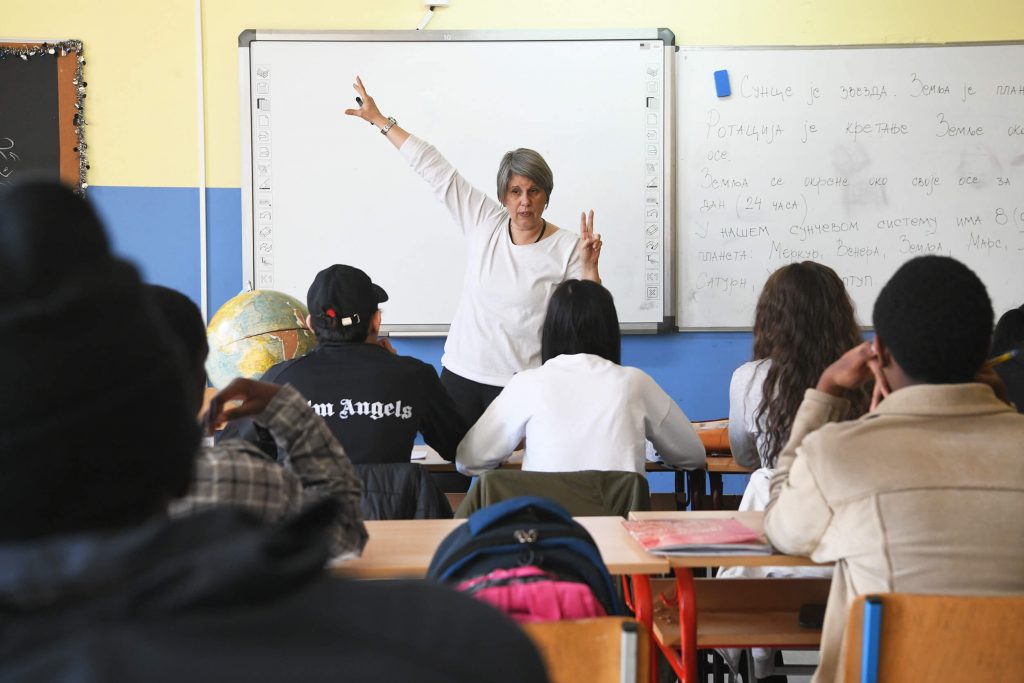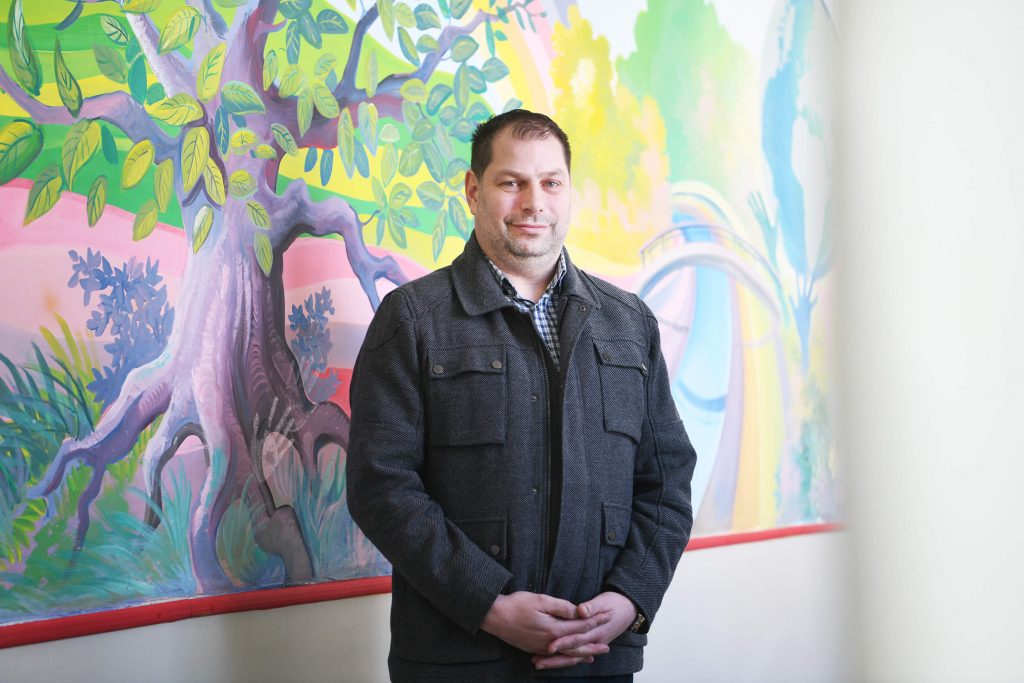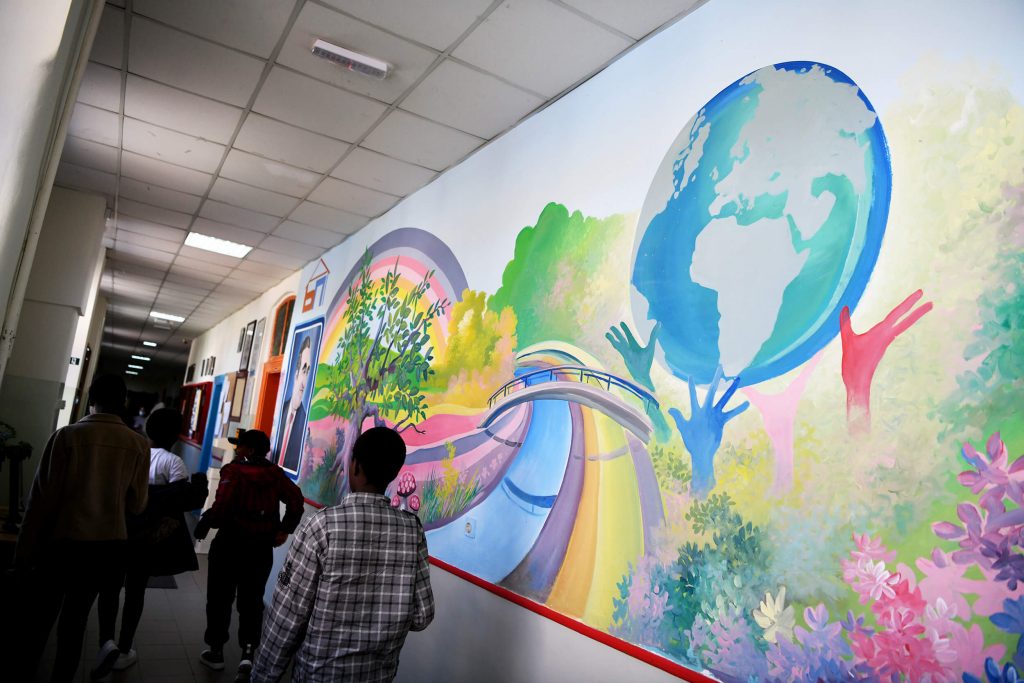Due to the civil war in Burundi, Jean (16) and Pierre (14) had to leave their home and start a refugee journey full of uncertainty in that small country in the eastern part of Africa. They share the fate of millions of migrant children. They found security in Serbia. Upon arrival 5,000 kilometers away from Belgrade, which they literally call “White City”, they were placed in the Krnjača Asylum Center, and the staff of the “Branko Pešić” Elementary School in Zemun has taken care of their abruptly interrupted education. This institution has experienced working with migrant and refugee children since the beginning of the migrant crisis in 2015.
That is why it is not surprising that Jean and Pierre (names were changed for the sake of their identity protection) were well received and accepted, and that they immediately found new friends in the school where 11 students from the migrant population are currently being educated.
Apart from showing him the city immediately, Jean’s new friends, as he says, accepted him as if they had known him all their lives. They especially liked the fact that he is an excellent basketball player, that in the country of basketball, such as Serbia, it is the best possible recommendation.
“I train at Partizan, I love basketball, and that is my future,” Jean tells us in a mixture of English and Serbian and proudly adds that in two or three months he will learn our language enough to communicate only in it. It is especially important for him because he wants to continue living and studying in Serbia.
Pierre also points out that he was very well received by his new friends, but his strongest impression was, and many of his peers could envy him, that mathematics in the eighth grade in Serbia, as he explained, is “less complicated” than what is studied in Burundi at that age.
The secret may lie in the fact that children in his country attend primary school from the age of five, so Pierre practically has two years more mathematical knowledge and experience compared to his peers in Serbia.

They saw the snow for the first time
He sees his future in France – primarily because of French, which is the official language of Burundi in addition to Kirundi – where he intends to attend an architectural school, while his sister is determined to stay in Belgrade and study French.
Apart from “easy” mathematics, he will remember Serbia for something else.
“It was the first time I saw snow here and it was snowing, and I even caught a cold,” says Pierre.
On the way from Krnjača to Zemun, Jean and Pierre face another challenge, public transport, and their Serbian language teacher Ljiljana Panjković has helped them to cope with that.
She says that, although they come from countries where most Latin is the official alphabet, she insists that children who fled to Serbia first adopt Cyrillic, mostly because they use public transport, and the names of stations at bus stops are in Cyrillic.
It is easiest to teach children to read and write, but, as everyone who has tried to learn Serbian knows, grammar is a special challenge.
“It is crucial, given that they are independent and unaccompanied when moving through the city, to learn the basic language concepts that their families need. We empower them to help themselves and their usually large families with many children by learning the language because someone has to know the language in order to, if necessary, see a doctor at the Asylum Center or to go to the store “, says Panjković.
She points out with a laugh that she had the idea that after finishing her studies she would teach Serbian as her mother tongue, but this case showed that it isn’t so at all.
Thanks to the situation she found herself in and the children she works with, she learned that she should speak slower and use shorter sentences, so that children could better understand her, learning along the way how to use all available translation programs.
Since she teaches children, Serbian citizens, who returned to Serbia according to the Law on Readmission, and internally displaced children from Kosovo who do not know Serbian, her classes are very dynamic.
Inclusion of migrant children
“We have a child who speaks Albanian with a very bad pronunciation of Serbian, a child from the Albanian-speaking area who has been in Germany for a long time and actually speaks German, a Roma child whose mother tongue is not Serbian, and there are Kirundi, Swahili, Arabic, French, English and I need to teach them all Serbian. Sometimes I use my arms and legs a little more to explain a word”, says Ljiljana Panjković with laughter.
Unlike other European countries, in Serbia migrant children do not learn Serbian in preparatory classes in asylum centers and reception centers, because in our country the inclusion of children without separation in special classes is applied.
“Such a system designed by our Ministry of Education, Science and Technological Development is better for children, because when they leave the centers they have the feeling that they live a normal life if it could be called that because a child who is used to going normally to school is less hurt by being abroad. That move is good, although it is hard for the teacher and maybe harder for the child, but I think the situation is healthier and more normal for the child, to be in school right away, even if they only learned a few words a day,” she says.
As the most important thing she learned in working with that diverse group, she states that children, wherever they come from, are always just children, that they need to laugh, that they like to avoid obligations, but also seek to establish order and authority and not to be different from their peers.
Nenad Ćirić, director of the “Branko Pesić” primary school, says that since the beginning of the education of migrant and refugee children, the biggest challenge has been the language barrier.
Emphasizing the excellent cooperation with the Ministry of Education, the Commissariat for Refugees and Migration, and the non-governmental sector, Ciric points out that every child from the Krnjača Asylum Center has a student mentor in charge of helping him.
The opposite happened as well, he says, that migrant children and refugees who were forced to travel several thousand kilometers alone and who grew up overnight because of that – became mentors to children from Serbia, because during that time they became more mature and responsible.
According to the Ministry of Education, Science and Technological Development, from the school year 2015/16, between 97 and 98 percent of migrant and refugee children are included in the education system of Serbia.

Classes in 16 primary and 10 secondary schools
During this year, migrant children attended classes in 16 primary and 10 secondary schools, and a preparatory preschool program was organized in one kindergarten.
So far, more than 5,000 migrant children have studied, socialized, and prepared for a better future in our schools.
The European Union (EU) is the largest donor to the Republic of Serbia in migration management. Since 2015, with the increased mixed migration, flows to the territory of Serbia, the EU has assisted Serbia with more than EUR130 million in providing humanitarian aid and protection to migrants, in particular protection of children, providing conditions for reception and care in the reception and asylum centers, including food, health care, and education, providing assistance to the local communities/municipalities hosting migrants to strengthen social cohesion, assisting Serbia in the protection of the state border and combating smuggling of migrants, as well as capacity building of the institutions dealing with migration management.
Jean and Pierre testify that all that help is not in vain, and thanks to it, they were enabled to live decently and get a quality education. The war took away a lot from them, but not the most important thing, their belief that with education and diligence they will create a secure future for themselves.

Pierre will quietly and unobtrusively, but precisely and firmly founded, as it goes along with a future architect, build among all the building projects that currently exist in the most important base of construction plans – his creative imagination.
With Jean, at least according to what he showed us at the parting, there is no dilemma. His shot from half distance is safe, the game in defense is solid, and for the very end, there is his strongest weapon – three points for the future in Partizan, and maybe one day in the Serbian national team.